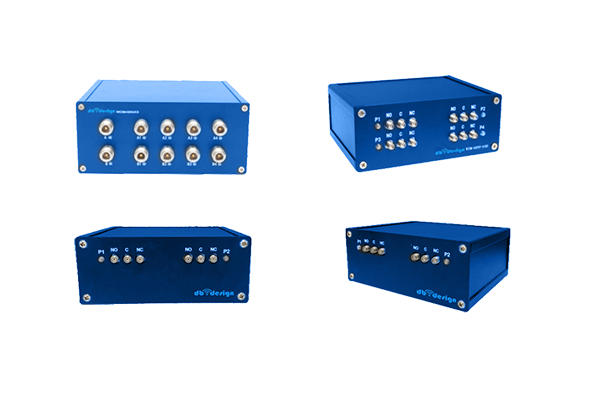
Pin diodes are widely recognized as vital components in RF systems because of their intrinsic functional attributes Their prompt switching characteristics combined with low capacitance and small insertion loss enable efficient use in switching modulation and attenuation scenarios. The essential process enabling PIN diode switching is manipulating current through the diode using a biasing voltage. Voltage bias impacts the depletion layer width across the junction and consequently the conduction. By varying the bias level PIN diodes can be reliably switched to operate at high frequencies with low distortion
Where timing precision and control matters PIN diodes get implemented into high-level circuit systems They are effective in RF filter designs to allow selective passage or rejection of designated frequency ranges. Moreover their high-power handling capability renders them suitable for use in amplification division and signal generation stages. Miniaturized high-efficiency PIN diodes now find more applications in wireless and radar technologies
Designing Coaxial Switches for Optimal Performance
Coaxial switch design is a sophisticated process involving many important design considerations Switch performance is influenced by factors like the switch type operating frequency and insertion loss characteristics. Superior coaxial switch design seeks minimal insertion loss alongside strong isolation between ports
Examining performance entails assessing return loss insertion loss and isolation figures. Assessment employs simulation, analytical modeling and experimental measurement techniques. Accurate analysis is crucial to ensure reliable coaxial switch operation across systems
- Simulation tools analytical methods and experimental techniques are frequently used to study coaxial switch behavior
- The behavior of a coaxial switch can be heavily influenced by temperature impedance mismatch and manufacturing tolerances
- Emerging developments and novel techniques in switch design concentrate on boosting performance while minimizing footprint and energy use
Optimizing LNA Designs for Performance
Maximizing LNA performance efficiency and gain is necessary to secure exceptional signal quality in applications This calls for deliberate active device selection bias strategies and topological design choices. A robust LNA layout minimizes noise inputs while maximizing amplification with low distortion. Modeling and simulation tools enable assessment of how transistor choices and biasing alter noise performance. Targeting a small Noise Figure quantifies how well the amplifier keeps the signal intact against intrinsic noise
- Opting for transistors with small inherent noise is a vital design decision
- Optimal proper and suitable bias conditions are necessary to limit noise generation in transistors
- Topology of the circuit strongly affects total noise performance
Tactics like impedance matching noise mitigation and feedback regulation advance LNA performance
RF Routing Strategies with PIN Diode Switches

Pin diode switch implementations yield flexible efficient routing of RF signals in diverse applications They can be switched very fast to allow flexible dynamic routing of RF signals. Their minimal insertion loss and robust isolation characteristics prevent significant signal degradation. Common uses encompass antenna selection duplexers and phased array implementations
A control voltage governs resistance levels and thereby enables switching of RF paths. In its open state the diode’s resistance is high enough to stop signal flow. Applying a forward control voltage lowers the diode’s resistance enabling signal transmission
- Moreover PIN diode switches combine quick transitions low consumption and compact form factors
Different architectures and configurations of PIN diode switch networks enable complex routing capabilities. Linking multiple PIN switches produces dynamic matrices that allow adaptable signal path configurations
Coaxial Microwave Switch Testing and Evaluation

Extensive testing and evaluation are important to ensure coaxial microwave switches operate optimally in complex systems. A range of factors like insertion reflection transmission loss isolation switching rate and bandwidth affect switch performance. Comprehensive assessment includes testing these parameters under multiple operating environmental and test scenarios
- Furthermore the testing should cover reliability robustness durability and resistance to harsh environmental influences
- In the end the outcome of rigorous evaluation supplies essential valuable and critical information for switch selection design and optimization
Minimizing Noise in LNA Circuits A Comprehensive Review
LNAs serve essential roles in wireless RF systems by amplifying weak signals and curbing noise. This review article offers an in-depth examination analysis and overview of LNA noise reduction approaches. We analyze investigate and discuss main noise origins such as thermal shot and flicker noise. We also cover noise matching feedback network techniques and ideal bias strategies to mitigate noise. It presents recent developments like new semiconductor materials and fresh circuit architectures that lower noise figure. Providing comprehensive insight into noise management principles and approaches the article benefits researchers and engineers in RF system development
Applications of Pin Diodes in High Speed Switching Systems

They possess unique remarkable and exceptional qualities beneficial for high speed switching Low capacitance and low resistance contribute to very fast switching enabling precise timing control in demanding applications. Further PIN diodes’ proportional response to voltage facilitates exact amplitude modulation and switching control. Versatility flexibility and adaptability enable their suitable applicable and appropriate deployment in many high speed applications Examples of deployment include optical communication systems microwave circuits and signal processing equipment and devices
IC Coaxial Switch and Circuit Switching Advances
Integrated circuit coaxial switch technology marks a significant advancement in signal routing processing and handling within electronic systems circuits and devices. Such integrated circuits are built to control manage and direct signal flow over coaxial lines while delivering high frequency performance and low propagation or insertion latency. IC miniaturization enables compact efficient reliable and robust designs ideal for dense interfacing integration and connectivity needs
- Through careful meticulous and rigorous implementation of these approaches engineers can achieve LNAs with exceptional noise performance supporting sensitive reliable systems By carefully meticulously and rigorously applying these approaches designers can realize LNAs with outstanding noise performance enabling sensitive reliable electronic systems With careful meticulous and rigorous deployment of these approaches developers can accomplish coaxial switch LNAs with outstanding noise performance enabling trustworthy sensitive electronics Through careful meticulous and rigorous application of such methods engineers can design LNAs with top tier noise performance enabling dependable sensitive systems
- IC coaxial switch uses include telecommunications data communications and wireless network systems
- Aerospace defense and industrial automation represent important application areas
- Consumer electronics audio video equipment and test measurement instruments utilize IC coaxial switching
Design Considerations for LNAs at mmWave Frequencies

Millimeter wave LNA design must address elevated signal attenuation and stronger effects of intrinsic noise. At millimeter wave ranges parasitics dominate so meticulous layout and selection of components is essential. Controlling input match and achieving high power gain are critical essential and important requirements in mmWave LNA design. Selecting active devices like HEMTs GaAs MESFETs and InP HBTs greatly affects achievable noise figures at these frequencies. Additionally the development implementation and optimization of matching networks plays a vital role in efficient power transfer and impedance matching. Careful management of package parasitics is necessary to prevent degradation of mmWave LNA performance. The use of low-loss lines and careful ground plane planning is essential necessary and important to limit reflections and sustain bandwidth
Characterize and Model PIN Diodes for RF Switching Applications
PIN diodes are critical components elements and parts in many RF switching applications systems and contexts. Comprehensive accurate and precise characterization of these devices is essential to enable design development and optimization of reliable high performance circuits. This includes analyzing evaluating and examining their electrical voltage and current characteristics like resistance impedance and conductance. Also characterized are frequency response bandwidth tuning capabilities and switching speed latency response time
Furthermore developing precise models simulations and representations for PIN diodes is crucial essential and vital to forecast performance in complex RF systems. A range of modeling approaches including lumped element distributed element and SPICE models are used. Choosing the proper model relies on the specific application requirements and the desired required expected accuracy
State of the Art Techniques for Low Noise Amplifier Design
LNA engineering calls for careful topology and component selection to meet stringent noise performance goals. New and emerging semiconductor advances have led to innovative groundbreaking sophisticated design techniques that lower noise substantially.
Representative methods consist of using implementing and utilizing wideband matching networks selecting low-noise transistors with high intrinsic gain and optimizing biasing schemes strategies or approaches. Additionally furthermore moreover advanced packaging and thermal management techniques are important to lower external noise sources. By meticulously carefully and rigorously adopting these practices designers can deliver LNAs with excellent noise performance supporting reliable sensitive systems
